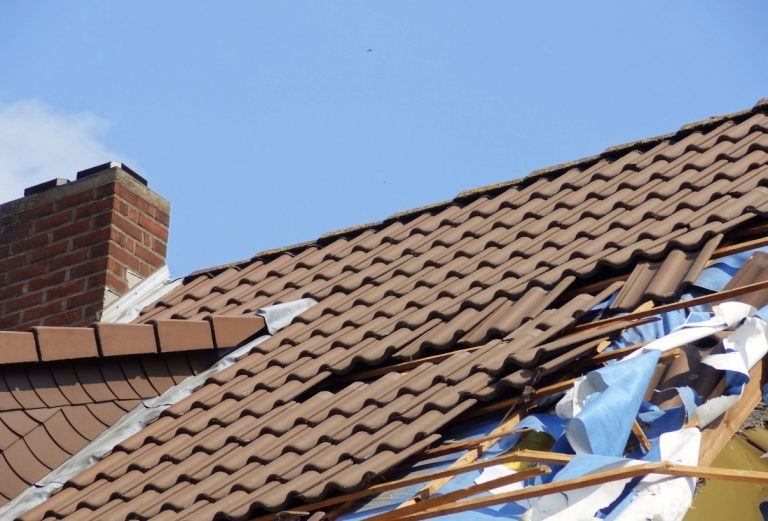When storms strike, they can leave behind a trail of destruction, with roofs often bearing the brunt of the impact. Identifying and repairing roof damage quickly is crucial to protect your home from further issues, such as leaks, structural deterioration, and mold growth. Understanding how to assess your roof’s condition after a storm helps you preserve your property and saves you time and money in the long run. This guide will help you identify and repair roof damage from hurricanes.
Identifying Roof Damage
The first step in repairing roof damage from storms is to identify the signs of damage. Here are some common indicators that your roof may have been affected by a storm:
- Missing shingles: High winds can rip off shingles and leave bare spots on your roof.
- Damaged or cracked shingles: Hailstones, tree branches, and debris can cause shingles to crack or break.
- Dents or dings on metal roofs: Heavy hailstorms can dent metal roofing materials.
- Granule loss: After heavy rain, you may notice an accumulation of granules in your gutters, indicating damaged shingles.
- Water stains on ceilings or walls: Leaks in the roof can cause water to seep into your home and leave stains on walls or ceilings.
If you spot any of these signs, taking action quickly is essential. Ignoring roof damage can lead to more severe issues, such as extensive water damage and mold growth. Even if the damage seems minimal, it’s best to have a professional roof repair after a storm specialist inspect and assess the damage to ensure it is properly addressed. A thorough inspection will also help determine the extent of the damage and whether a full replacement or just repairs are necessary.
Repairing Roof Damage
Once you have identified any damage, the next step is to repair it. Depending on the severity of the damage, you may be able to fix minor issues yourself. However, it’s always best to hire a professional roofing contractor for more extensive damage. Here are some common methods for repairing roof damage from storms:
Replacing Missing or Damaged Shingles
Replacing missing or damaged shingles is a crucial aspect of roof repair following a storm. First, you must gather the necessary materials, including matching shingles, roofing nails, and a pry bar. First, carefully remove any damaged or loose shingles using the pry bar, taking care not to damage the surrounding shingles. Once the damaged shingle is removed, position the new shingle in place, ensuring it aligns appropriately with the existing shingles. Secure it with roofing nails, covering the nail heads with roofing adhesive to prevent water infiltration. Inspecting the surrounding area for any additional damage and making necessary adjustments to maintain the roof’s integrity is essential. If you’re unsure about the process or the extent of the damage, seeking help from a professional might be the safest option to ensure a proper and long-lasting repair.
Patching Holes or Tears
A patch can effectively seal small holes or tears in your roof and prevent further water damage. To patch a hole, you’ll need roofing material (such as a shingle), roofing cement, and a trowel. First, thoroughly clean the damaged area by removing debris or loose pieces. Using the trowel, apply roofing cement to cover the hole, then place the new material over it. Finally, secure it in place with more roofing cement and smooth out any excess for a seamless finish.
Clearing Debris from Gutters
TClear debris from gutters to maintain your roof’s integrity after a storm; Storms often leave leaves, branches, and other particles in gutters. Clogged gutters can cause water overflow, leading to leaks, roof damage, and foundation issues. Remove debris using a scoop or your hands, ensuring downspouts are unobstructed. Use a ladder safely and wear gloves for protection. Consider flushing gutters with water to ensure proper drainage. Regular gutter maintenance helps prevent storm-related issues, protecting your roof and home.
Fixing Dents or Dings on Metal Roofs
Metal roofs are durable but can still sustain damage from heavy hailstorms. If you notice dents or dings on your metal roof, contacting a professional for repairs is best. Attempting to fix the damage yourself could result in further damage and compromise the integrity of your roof. A professional will have the necessary tools and expertise to safely repair ants or dings without causing additional harm.
Identifying and repairing roof damage after a storm is crucial for preserving your home’s structural integrity and preventing further issues. Knowing how to assess damage and taking prompt action can save time and money in the long run—RAlwaysprioritize safety when attempting to repair roof damage, and seek professional help when needed. With the right approach, your roof can withstand even the fiercest storms while protecting your home. So, it’s essential to stay vigilant and act quickly after a storm to ensure your roofing remains in top condition for years.

0 Comments